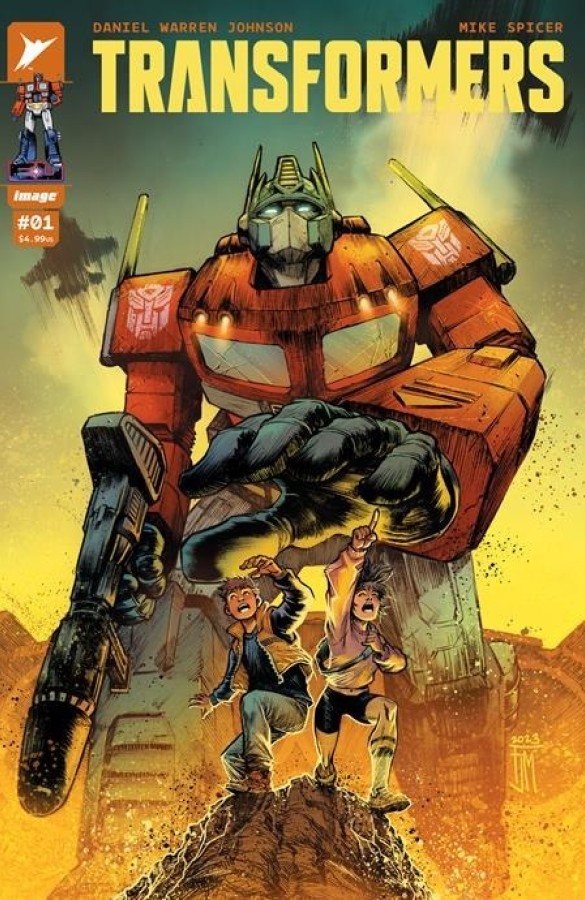
Smart Ways to Explore Dilbert Comics in 2025: Enjoy Laughs!
Dilbert comics, created by Scott Adams, have long been a staple of workplace humor and corporate satire. Hitting the sweet spot of irony and absurdity, these comics provide a humorous lens on the intricacies of office culture and the ridiculousness often found within corporate settings. As we step into 2025, it's time to delve deeper into the world of Dilbert, exploring not just the comic strips but also their broader implications for employee morale, business ethics, and office politics.
This article will unveil various smart ways to explore Dilbert comics, including the significance of humor in the workplace, analysis of classic strips, and participation in online communities. By leveraging humor as a communication tool, we can enhance workplace relationships, elevate employee perspectives, and ultimately cultivate a more enjoyable work environment.
Expect to discover practical tips for engaging with Dilbert's delightful narrative, character sketches, and the role of humor at work. From comic analysis to exploring daily comics, let's navigate through the enlightening and amusing world of Dilbert!
Understanding the Essence of Dilbert Comics
Building a robust appreciation for Dilbert begins with understanding its essence. The comic strip humorously critiques typical office scenarios, revealing the absurdity of corporate life. Scott Adams expertly depicts the struggles of the common employee trapped in cubicle life, highlighting the stereotypical interactions that make up office culture.
Through the lens of Dilbert characters, readers experience a unique blend of corporate satire and relatable storylines. The use of irony and humorous anecdotes make complex subjects, such as management ethics and employee dynamics, approachable and entertaining. Engaging with humor in these contexts leads not only to laughs but also deeper insights into the workplace.
Moreover, the comic's relevance continues to thrive in today’s tech culture, reflecting modern work environments while maintaining its classic appeal. Cartoonists like Adams use character development to explore the dynamics of office relationships, which makes the humor resonate even more with those familiar with its settings.
This naturally leads us to an exploration of the different dimensions of corporate humor and its vital role in enhancing employee morale and productivity.
The Role of Humor in Corporate Culture
Humor in corporate culture serves as a vital tool for fostering good employee relations and communication. As workplace comedy unfolds through Dilbert episodes, it showcases how laughter can break down barriers between management and staff. This comic format effectively delivers critiques of office politics and common job challenges through visual gags and clever punchlines.
In 2025, understanding the impact of humor on teamwork and productivity is crucial. Research indicates that a lighthearted atmosphere boosts morale and encourages open communication. Dilbert creates a platform for relatable content that employees can bond over, thus enhancing overall workplace dynamics. The relatability of the situations depicted helps employees to cope with their work-related stressors.
For example, setting up a 'Dilbert Day' in offices where employees can share their favorite strips and discuss the depicted scenarios can nurture a more enjoyable workplace. Incorporating humor into regular business communication strategies creates a more relaxed environment where employees feel more valued and understood.
Connected to this principle, let’s delve into practical methods for integrating Dilbert’s humor into workplace settings.
Implementing Dilbert’s Humor in the Workplace
One smart way to explore Dilbert comics is to incorporate them into daily office routines. Using humorous illustrations from the comic strip in presentations can lighten the atmosphere during meetings. Furthermore, sharing comic strips in company newsletters or emails can serve as delightful comic relief and engage employees in enjoyable discussions.
Consider organizing comic read-aloud sessions during team-building exercises, where everyone can appreciate the humor behind the Dilbert characters. This fosters an inclusive environment and encourages team bonding through shared laughter. Additionally, analyzing specific strips can provide employees with new perspectives on their work situations and spark insightful conversations about workplace dynamics.
Moreover, online comic communities allow readers to share their interpretations and personal connections with the comics. Platforms like the Dilbert blog and forums dedicated to comic critiques provide opportunities for fans to discuss the latest episodes and their relevance to modern work life, adding depth to their understanding and appreciation.
This not only enhances the experience of reading Dilbert comics but also helps employees to view their work environment through a humorous lens. As we move forward, it’s essential to explore the evolution of the Dilbert comic strip and its cultural significance.
The Evolution of Dilbert Comics
The journey of Dilbert comics since their inception showcases a fascinating evolution that mirrors shifts in corporate culture. Scott Adams has developed the characters over time, reflecting changes in workplace relationships and behaviors. This evolution not only marks the progression of the comic strip’s humor and style but also responds to current trends in business communication.
The increase in tech-related themes within Dilbert comics highlights the growing influence of technology in the workplace. Characters now navigate scenarios involving remote work, virtual meetings, and AI tools, enhancing their relatability in contemporary work settings. Furthermore, updates to comic strip formats have allowed for visual storytelling methods that resonate more with today's comic readers.
Engaging with these evolutions offers insights into how business ethics and corporate humor have transformed over the years. Readers can trace the growth of comic character arcs and analyze how they respond to emerging corporate trends, as well as address potential issues in corporate life.
By reflecting on the absurdities of business through the lens of humor, Dilbert becomes not just a comic strip but a social commentary on corporate environments. As we transition into exploring how Dilbert characters embody various aspects of office culture, let’s take a closer look at their development.
Character Development in Dilbert Comics
The rich tapestry of characters in Dilbert comics plays a crucial role in the series’ appeal. Each character embodies specific traits common within corporate environments, from the hapless Dilbert to the ambitious Dogbert. This range of personas allows readers to identify with their dilemmas and laugh at the eccentricities of corporate life.
For instance, Dilbert himself represents the everyman, navigating the challenges of cubicle life with humor and sarcasm. Conversely, management figures, like The Pointy-Haired Boss, exemplify the often absurd nature of leadership in the workplace. Such juxtaposition serves to highlight the differences in perspectives between employees and management, using irony and satire as a vehicle for critique.
Engaging with character-driven storytelling provides readers with relatable narratives that reveal underlying truths about office environments. By examining character interactions and their humorous portrayals, employees can find common ground and uplift their workplace morale. Creating comics that resonate with characters like Wally or Alice can also inspire employees to contemplate their work situations, drawing parallels and instilling a sense of community.
Following this exploration of character dynamics, we'll address the impact of Dilbert comics in online spaces, showcasing how humor continues to thrive in today's digital culture.
Dilbert Comics in the Digital Era
As we navigate through the digital landscape of 2025, Dilbert comics have found their way into online communities, giving rise to a new dimension of engagement. Platforms such as social media and comic syndication sites have widened the reach of Scott Adams' work, allowing fans to share and discuss their favorite strips in real-time.
The accessibility of Dilbert comics online provides a fresh avenue for promotions and reader interactions. Readers can also create memes derived from the strip's humor, often remarking on current workplace trends or frustrations. Such modern interpretations of Dilbert enrich discussions around the themes presented in the comics and offer greater relevance to contemporary audiences.
At the same time, the phenomenon of comic book creation has gained momentum, encouraging fans to craft their versions of workplace humor influenced by Adams. The continued proliferation of comic analysis within these online communities further enhances reader engagement and showcases the wide-ranging implications of humor on business communication.
As we conclude this thorough examination of Dilbert comics, it’s essential to reflect on the impact of comic relief in office environments and its ultimate role in fostering enjoyable workplaces.
The Impact of Comic Relief on Office Productivity
Comic relief plays a significant role in terms of employee productivity and morale, underscoring the importance of humor in the workplace. Dilbert comics, with their witty storytelling and sharp satire, serve not only as a source of laughter but also as a balm for the daily stresses of office life.
Studies show that incorporating humor into corporate settings fosters engagement and innovation, with employees feeling more motivated when surrounded by a lighthearted atmosphere. By using Dilbert comics as a reference point, teams can address challenging issues while maintaining a positive environment. Laughter encourages creativity and strengthens team bonds, helping employees navigate their work responsibilities with a renewed sense of vigor.
As we embrace the integration of humor into daily routines, we can look to Dilbert comics to inspire and uplift workplace relationships. Utilizing humor highlights the absurdity of certain situations and makes even the heaviest workplace topics approachable, ensuring higher employee satisfaction.
Ultimately, whether it’s through newsletters, team-building exercises, or casual conversations, incorporating Dilbert into office culture can yield substantial benefits for overall workplace dynamics.

In 2025, the exploration of Dilbert comics remains ever-relevant, bridging the gap between humor, corporate culture, and the unique challenges faced by employees daily. As employees continue to navigate their careers filled with dedication and laughter, the Dilbert series remains a timeless companion, offering perspectives that keep us grounded and entertained.

Q&A: Exploring Dilbert Comics Further
Q: How can I incorporate Dilbert comics into my workplace environment?
A: Consider sharing daily Dilbert strips via email newsletters or setting up a designated humor wall in the break room where employees can pin up their favorites. Use comic illustrations in presentations to add a light-hearted touch while addressing serious topics.
Q: What are the key themes present in Dilbert comics?
A: Key themes include irony in corporate life, employee and management dynamics, absurd challenges in the office, and humorous perspectives on everyday office scenarios.
Q: Where can I find more Dilbert content online?
A: You can explore official Dilbert newsletters and the Dilbert blog for deeper analysis and updates. Online comic platforms also feature an extensive collection of past and current comic strips that you can enjoy.
Q: What role does humor play in workplace communication?
A: Humor can facilitate better communication by creating a relaxed atmosphere. It allows for candid discussions about workforce challenges and fosters an environment where creative ideas can flourish.
Q: Why is corporate humor important for employee relationships?
A: Corporate humor encourages collaboration among employees, boosts morale, and helps bridge gaps in communication between different levels of staff, ultimately leading to a more harmonious workplace.
As we venture into 2025, exploring Dilbert comics reveals the undeniable power of humor in the workplace, making daily challenges more manageable through laughter and relatable experiences.